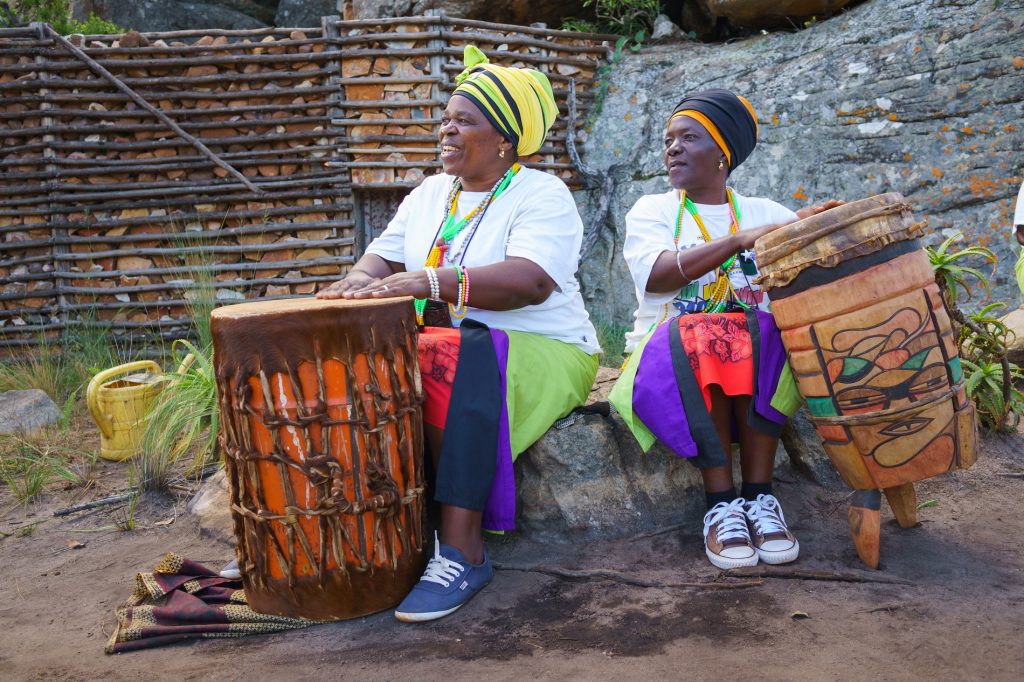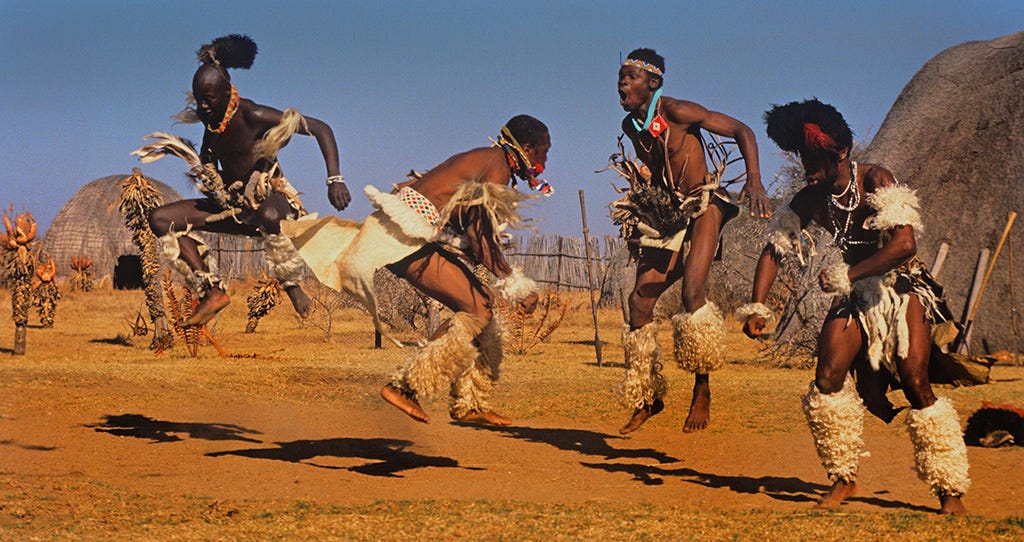Some Known Details About South African Culture Today
Some Known Details About South African Culture Today
Blog Article
Examine This Report about South African Culture Today
Table of ContentsLittle Known Questions About South African Culture Today.The Only Guide for South African Culture TodayNot known Facts About South African Culture TodaySome Known Details About South African Culture Today Excitement About South African Culture TodayNot known Details About South African Culture Today
A matter of value in Zambian towns is the passing away of enjoyed ones. All members of the town placed money, time and initiative with each other for the burial of the deceased.Music and dance is a very essential aspect of the Zambian culture. The numerous tribal systems have their own dance kinds; nonetheless, makishi is typical amongst all people.
An Unbiased View of South African Culture Today
When it comes to songs, drums are made use of the most, with a range of drumming ceremonies. In Zambia, majority of individuals are Christian; Protestant and Roman Catholic. There are tiny groups of Muslims and Hindus, with the rest adhering to regional indigenous tribal beliefs.

South African heritage and society is exceptionally varied, and contains several groups of individuals that each have their own practices and beliefs. Having such a variety of people and cultures is what makes South Africa so distinct. In truth sense of the expression, we are a rainbow country.
South Africa has roughly three hundred thousand Portuguese individuals staying in it. Making it the 7th on the listing of countries with one of the most Portuguese people in it outside of Portugal. Portuguese is not just a culture, yet it is likewise a language and a citizenship. Portuguese people stem from the country of Portugal in Europe, however, as a result of Portugal (like lots of other nations in Europe) exploring the globe and conquering various other countries throughout the 15th 20th centuries, South Africa has what we call Portuguese South African's living in it.
How South African Culture Today can Save You Time, Stress, and Money.
Among the prominent attributes of the topography is a plateau that covers nearly two thirds of the facility of the country. The plateau facility rises towards the southeast, where it culminates in the Drakensberg variety, component of a cliff that divides the plateau from the seaside locations. The Drakensburg consists of Sparkling wine Castle, the highest possible height in the nation.
The area north of the Witwatersrand, called the bushveld, inclines downward from eastern to west toward the Limpopo River, which forms the worldwide border. The western area of the plateau, the middleveld, likewise comes down in the direction of the west and varies in altitude in between the highveld and bushveld. In between the Drakensburg and the eastern and southerly coast, the land comes down to the sea.
Nearer the shore there is a low-lying level called the eastern lowveld. Southwest of the plateau the nation comes to be progressively more arid, paving the way to the hostile desert of the Great Karroo, surrounded on the east by the lower, better watered plateau of the Little Karroo. Separating the dry southern interior from the sandy littoral of the southerly shore and West Cape is an additional range, the Langeberg.
South African Culture Today for Beginners
The country's racially, ethnically, and politically split history has actually produced nationwide and subnational signs that still operate dig this as symbols of the country, and others icons that are accepted just by specific groups. The monoliths to white settler occupation and political supremacy, such as the Afrikaner Voortrekker ("pioneer") Monolith in Pretoria and the Rhodes Monument recognizing the British colonial empire home builder and Cape prime minister Cecil Rhodes, continue to be sectarian signs.
The very first modern inhabitants were the San ("bushman") hunter-gatherers and the Khoi ("Hottentot") individuals, who herded livestock (South African culture today). The San may have been present for thousands of years and left evidence of their presence in hundreds of ancient cavern paints ("rock art"). Bantu-speaking clans that were the forefathers of More Bonuses the Nguni (today's amaZulu, amaXhosa, amaSwazi, and vaTsonga individuals) and Tswana-Sotho language groups (today's Batswana and Southern and Northern Basotho) moved down from eastern Africa as very early as the fifteenth century

Both former republics of the Orange Free State and Transvaal (South African Republic) were developed by Afrikaner inhabitants who beat and dispossessed the Basotho and Batswana. Lesotho would certainly have been by force integrated right into the Orange Free State without the expansion of British protection in 1869. The best marriage of the nation resulted from the South African Battle (18991902) in between the British and both Afrikaner republics, which decreased the nation to ruin at the beginning of the twentieth century.
Afrikaners traditionally considered themselves the only real South Africans and, while giving complete citizenship to all homeowners of European descent, denied that status to people of color till the democratic shift of 1994. British South Africans keep a feeling of social and social connection to Great Britain without weakening their identification as South Africans.
Getting My South African Culture Today To Work
The variety and fragmentation within ethnic collections and the balance of stress in between those groups throughout the twentieth century stopped interethnic civil dispute. While intergroup stress over sources, entitlements, and political dominance continue to be, those disputes are as likely to pit Zulu versus Zulu as Zulu versus Xhosa or African against Afrikaner.
From colonial India, British vendors and administrators brought the rounded metal decorative roofing systems and slender shoelace work pillars that still typify the outdoor patios of cottages in communities and cities throughout the nation. Residences of worship add an essential building element also in the smallest communities. Along with the soaring steeples and timeless my website stonework of Afrikaans Dutch Reformed churches, Anglican churches, synagogues, mosques, and Hindu shrines give variety to the spiritual building scene.

Slaughtering and the brewing of typical grain beer are essential in protecting the involvement and goodwill of the forefathers that are taken into consideration the guardians of good ton of money, prosperity, and health. Indian areas keep their native culinary practices and apply them on Islamic and Hindu routine and ritualistic celebrations. Afrikaners and Coloured people gather at weekends and unique celebrations at multifamily bbqs called braais, where neighborhood bonds are enhanced.
Since this was the primary economic venture of both black Africans and white homesteaders, dispute between those groups focused on the possession of grazing land and animals. In 1867, the biggest diamond deposits on the planet were discovered at Kimberley in the west central location. The riches from those fields helped finance the exploitation of the best gold coral reef on the planet, which was discovered on the Witwatersrand in 1886.
Top Guidelines Of South African Culture Today
This caused misunderstandings and deliberate misstatement in the transactions of white settlers and federal government officials with African principals during the early american duration (South African culture today). In the establishment of African books, some aspects of common and chiefly "tribal trust fund" land tenure were maintained, and even in white backwoods, types of communal period were still exercised in areas with African neighborhoods
After the democratic makeover of 1994, programs for land restitution, redistribution, and reform were set up, but progression has been sluggish. The white minority still controls eighty percent of the land. Following farming land intrusions in Zimbabwe, the Department of Land Affairs has promised to speed up land redistribution.
Report this page